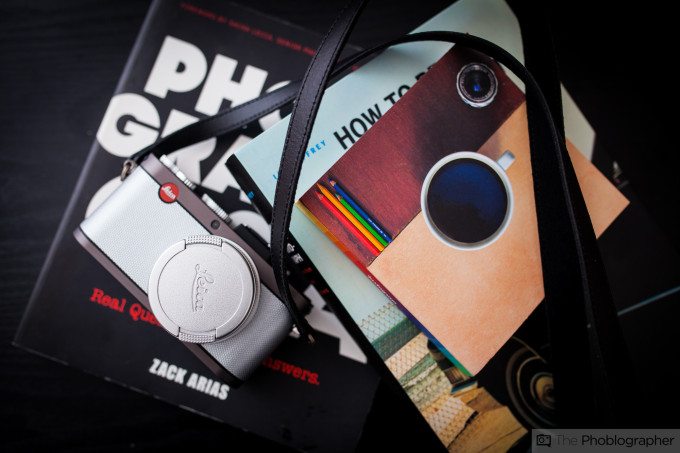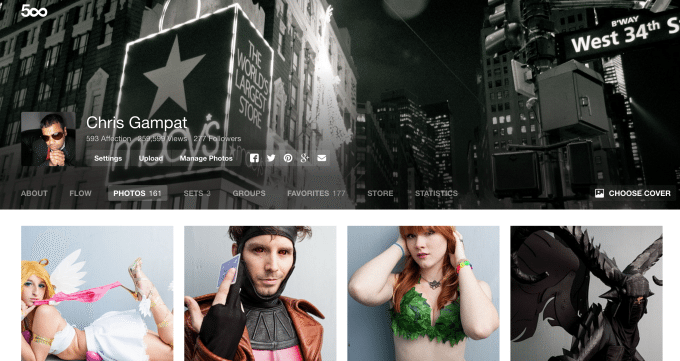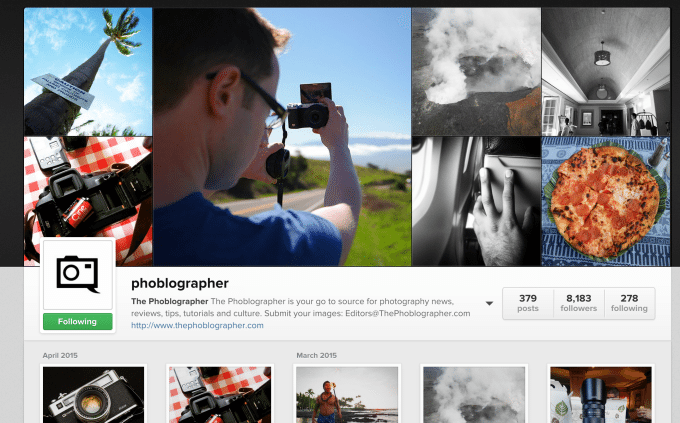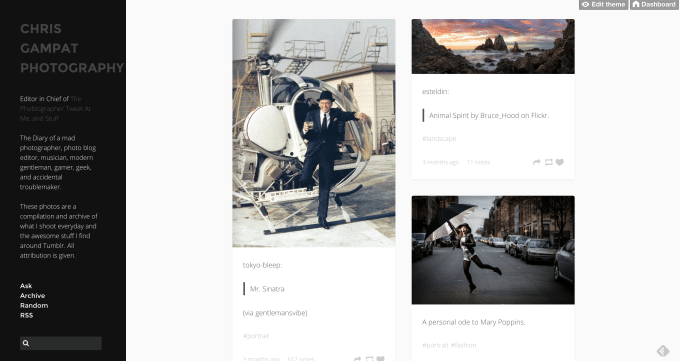Last Updated on 04/14/2015 by Chris Gampat
Showcasing your images on the web should first and foremost start with your own dedicated photography website. But it should go well beyond that or else all you’ve got is a message with no carrier pigeon or medium to spread the word. Additionally, modern photography marketing is all about social media, interactions, and generally interchanging ideas and commentary.
There are loads of photo communities out there with some being better than others–but this is relative and very subjective. What’s important are choosing the best ones for you.
The Big Ones
There are three cores that are tried, true and that pretty much everyone who calls themselves a photographer should be a part of. The sense of community that these three sites all encompass is very great but they all have their own different appeal.
Flickr
Flickr is best used by folks that have been on the site for years and years, but if you dig deep into communities and groups you can find your own space to share your work, get feedback, and get into discussions. Street photography, surreal photography, portraiture, landscapes, and film photography all have very big followings on Flickr and over the past couple of years the site has evolved into one that tries to attract more mobile photographers that mirror their images from Instagram, Tumblr or other spots.
For some, it’s just a dumping ground, but for others it’s their bread and butter.
500px
500px was originally designed to be for folks that do higher end work and encouraged users to only show off their very best. As is the way of the internet, folks ended up just doing massive photo dumps. But the way to make the best of 500px is with effective tagging and categorization. The layout and way that images are displayed is beautiful and amongst the best on the web. If you’re careful and very curatorial about your own work, it’s fairly simple to end up on their front page with Popular Choices or with Editor’s Choice.
Go ahead, roll your eyes just a bit louder…
Like it or not, Instagram is one of the best places for photographers to get discovered. But once you enter into it you should know that you’re not going to become a superstar overnight. You’ll need to use hashtags and communicate with other photographers to get noticed and gain followers. What’s nice is that you don’t need to shoot an image with your phone. Instead, you can upload it via your camera or send an image to Dropbox and download it onto your phone.
One of the best ways to get noticed is to find user accounts that aggregate the type of work that you put out there. Once you find a couple of cores, follow them and try tagging them or mentioning them in your images. Eventually, they’ll take notice of you and start to spread your work across the community. This is one way to gain followers.
The Alternatives
While there are core communities out there, there are also a couple of others that really stand out to us for being different in other ways than just incorporating comments, hashtags, and the standard external sharing features.
EyeEm
EyeEm is a community that isn’t so large in the US, but is enormous in Europe and Asia. They can in some ways be considered an Instagram competitor but in terms of design and functionality, they’re very much their own beasts.
Before Instagram had distortion correction, EyeEm allowed its users to do that. Additionally, they’ve got filters, basic photo adjustment and more. What’s really awesome about EyeEm is just how really simple it is to become discovered based on hashtags due to how your front page interface works–which curates the tags that you choose to follow as well as those who you call your friends. Beyond this, when you edit a photo you also choose a location which then shows you other images shot in the area that you’re checking into.
But most recently, EyeEm announced EyeEm Market, which lets you sell your images too. Additionally, there seems to be no form of curation which means that folks aren’t stealing photos in the community or using them without permission.
On a personal note, it’s my preference over Instagram.
Lattice
Lattice is put out by PhotoShelter and is a community where you upload images and tag them accordingly. It’s still very new, but it’s a great space for finding inspiration more than anything because of how the editors curate groups for some of the best photos that they’ve found.
Of all the ones on this list, it’s the newest but also has the most potential given the way that PhotoShelter shares data about the photography world and how many incredible photographers use their product.
PS: I’m an Editor.
Behance
Behance is a community that was bought by Adobe a couple of years ago and is perhaps the single best source of finding inspiration on this list. The community is much more tailored towards working artists and those that are incredibly serious about their craft. Artists can collaborate on projects, share their photos, receive feedback on works in progress, and share projects that they’ve completed. Additionally, the layout is incredibly clean.
Even more–Behance is integrated into pretty much every Adobe product.
Tumblr
If there were ever a site that solidified the fact that the internet is for porn, it could be Tumblr. But at the same time, Tumblr is also a great place for photography curators and creators alike. It’s an excellent spot to get your work noticed by thousands of people as long as you produce quality work that appeals to the editors and you use hashtags effectively. Many popular hashtags such as landscape, black and white, portrait, fashion and food are integral to the Tumblr photography community.
The other very cool part is that Tumblr is very centered around design and can be set up as either a blog or an actual website. In this way, your Tumblr can either be incredibly simplistic or very complicated depending on the route that you take. Just make sure that you brush up on your HTML skills before you dive in.
What’s strange though is that Yahoo! bought Tumblr and they also own Flickr; but to be fair the two can also be seen as completely different communities.
VSCO
VSCO in some ways is considered to be the biggest competitor to Instagram. The company originally was just creating filters and presets until they decided to grow. Then VSCO Grid came about, then Journals and over the years the company has really grown to not only be killer at aesthetics, but helping photographers create content that is super appealing to the Hipster-Chic marketing world.
And man, do they do an incredible job of it.





